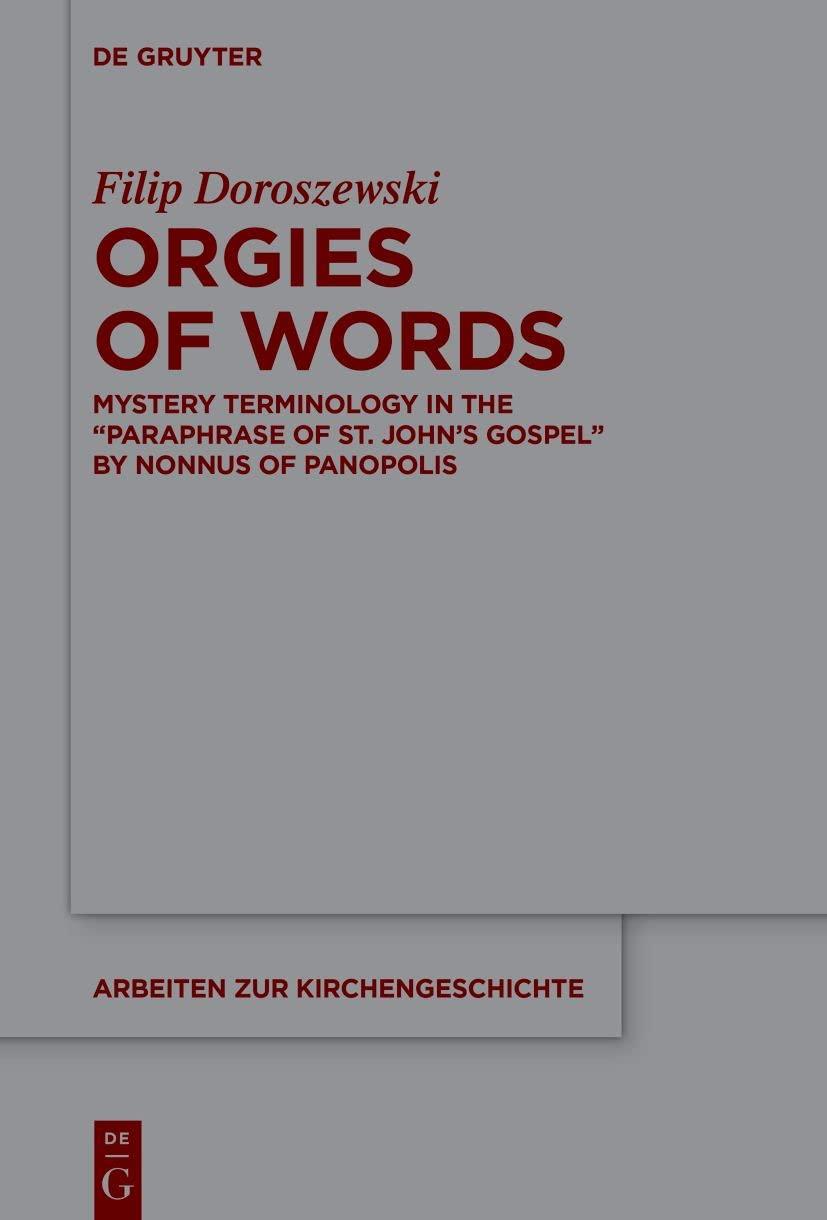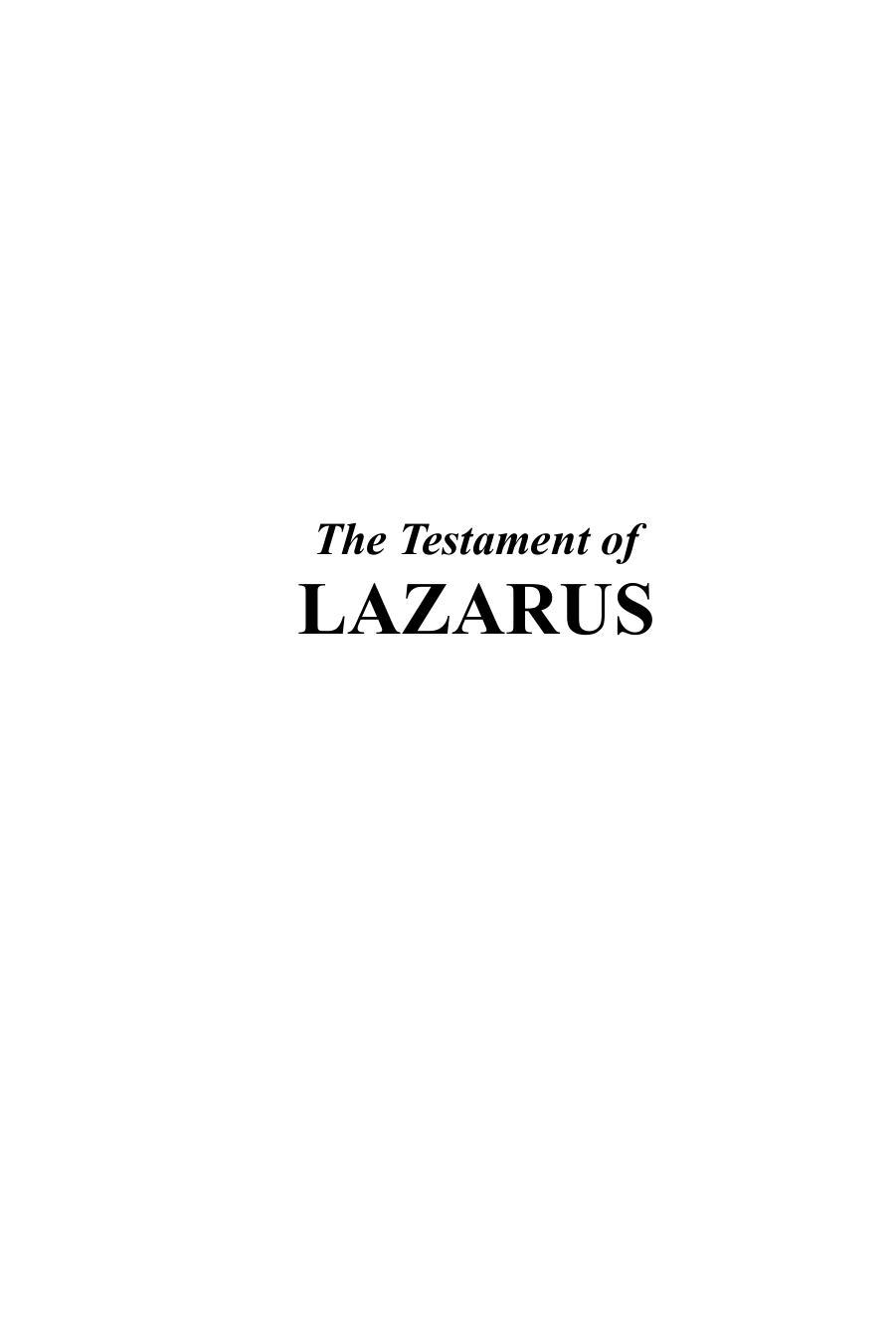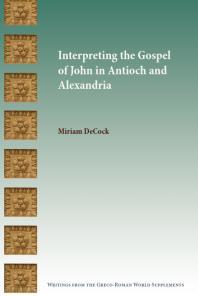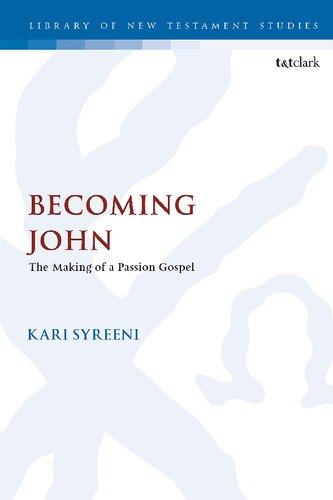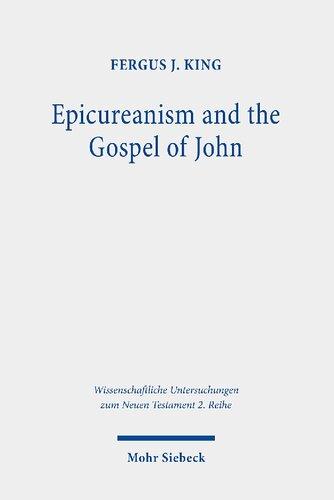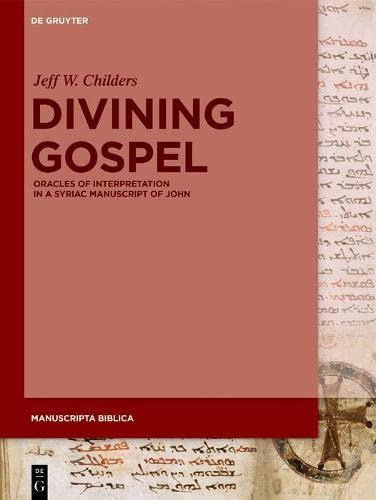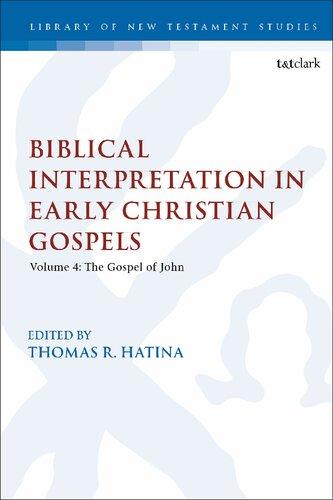Acknowledgements
Thisbookwouldnothaveassumeditspresentshapehaditnotbeenforthehelp ofPaweł Janiszewski,whomIwouldliketothankforhisunflaggingsupportat variousstagesofmyworkonthetext.IwouldalsoliketothankJanKozłowski, whounfailinglyprovidedmewithencouragementtocontinuemyresearch;our innumerablediscussionshaveespeciallycontributedtobringingtheobjectof thisstudyintosharpfocus.Ialsowishtoextendmygratitudetotheanonymous reviewersappointedbytheFoundationforPolishSciencefortheirinsightfulcriticism.Iwouldalsoliketothankmywife,JuliaDoroszewska,forherdailysupport,withoutwhichnocreativeworkispossible.
Finally,IwouldliketothanktheHardtFoundationinVandoeuvres,Switzerland(www.fondationhardt.ch),forthebursaryandmostpleasurablehospitalitythathelpedmeworkonthisbook.
https://doi.org/10.1515/9783110790900-202
AcknowledgementsVII
ForewordXIII
ForewordtotheEnglishtranslationXVII
AbbreviationsXIX
Part1: Introduction
1.1Ancientmysteries3
1.2Mysteryterminology11
1.3NonnusofPanopolis31
1.4Thescopeofinquiry39
1.5Mysteryterminologyinthe Paraphrase 45
1.5.1 ἀβάκχευτος 45
1.5.2 βακχεύω 46
1.5.3 θιασώδης 47
1.5.4 μύστης 48
1.5.5 μυστιπολεύω 49
1.5.6 μυστιπόλος 49
1.5.7 μύστις 50
1.5.8 ὄργια 52
1.5.9 τελετή 54
1.5.10Conclusion 56
Part2: JesusandDionysus
2.1TheweddingatCanaofGalilee59
2.1.1Preliminaryremarks 59
2.1.2Analysisof Par.2.12–20(=John2:3) 61
2.1.2.1Adimmedjoy 61
2.1.2.2AweddingwithoutDionysus 62
2.1.2.3Incompleteintoxication 67
2.1.2.4Bacchiccries.Ananalysisof Par. 2.35–38 73
2.1.3Finalremarks 75
2.1.3.1Thewinegivers.Parallelsbetween Par. 2.1–60andthe Dionysiaca 75
2.1.3.2TheAlexandriantradition 78
2.2Thefailedarrestattempt81
2.2.1Preliminaryremarks 81
2.2.2TheBacchiccrowd.Ananalysisof Par.7.172–182 (=John7:45–49) 83
2.2.3 Par. 7.172–182andEuripides’ Bacchae 85
2.2.4Finalremarks 88
2.3Jesus’ HighPriestlyPrayer91
2.3.1Preliminaryremarks 91
2.3.2Analysisof Par.17.88–92(=John17:25–26a) 91
2.3.2.1Orgiesofwords 91
2.3.2.2ADionysiacchorus. Par. 17.88–92versus Protrepticus 12.119.1 94
2.3.2.3Orgiesofwordsin Par. 16.111 96
2.3.3Finalremarks 98
Part3: Mysteriumandmysteries
3.1ThethreePassoverfeasts103
3.1.1Preliminaryremarks 103
3.1.2ThefirstPassover.Analysisof Par. 2.70–72,110–115 and Par. 4.204–205 104
3.1.2.1AJewishPassover? Par.2.70–72(=John2:13) 104
3.1.2.2Thenoise-lovingorgies. Par.2.110–115(=John2:23) 109
3.1.2.3ABacchicprocession. Par. 4.204–205(=ἐντῇἑορτῇ,John 4:45) 120
3.1.3ThesecondPassover.Ananalysisof Par. 6.9–10 (=John6:4) 123
3.1.3.1Anorgy-lovingfeast 123
3.1.4ThethirdPassover.Ananalysisof Par. 11.222–227 and12.1–6 124
3.1.4.1ThewidelyknownPassover. Par.11.222–227 (=John11:55) 124
3.1.4.2ThemysteryofthePassover. Par.12.1–6(=John12:1) 126
3.1.5Finalremarks 128
3.2JesusandtheSamaritanwoman131
3.2.1Preliminaryremarks 131
3.2.2Ananalysisof Par.4.88–121(=John4:19–24) 131
3.2.2.1Offeringsacrifice 131
3.2.2.2TheSamaritans,theJewsandthetrulyinitiated 135
3.2.3Finalremarks 142
3.3TheFeastoftheTabernacles145
3.3.1Preliminaryremarks 145
3.3.2Sacredinitiation.Ananalysisof Par.7.31–34 145
3.3.3Finalremarks 154
Part4: Conclusions
4.1Theroleofmysteryterminologyinthe Paraphrase 157
4.1.1Betweenpoetryandexegesis 157
4.1.2Mysteryterminologyintheexegesisofthe Paraphrase 158
4.1.2.1Dionysiac,orChristian,spirit 158
4.1.2.2MysteriumChristi 160
4.1.2.3JewishfeastsasBacchicmysteries 162
4.1.3Summary 163
Bibliography165
Indexgraecitatis181
Indexlocorum185
Indexnominum197
Foreword
NonnusofPanopolis,aGreekpoetfromlateantiqueEgyptwhoprobablylived andworkedinthecosmopolitancityofAlexandriainthefifthcenturyAD,isa mysteriousfigure.Consideringthelackofbiographicaldetails,scholarshave focusedtheirresearchonNonnus’ poeticoutput,whichisamuchmoregratifyingfieldofstudythanhisbiography(whichremainsdifficulttoreconstruct). Thepoet’slegacyiscomposedoftwoworksonly,butbothmayproveveryinterestingtocontemporaryreadersforanumberofreasons.Thefirstpoem,the Dionysiaca,isthelongestofallancientepicstohavesurvivedtothisday.Asits titlemakesevident,NonnusdedicatedittoDionysus,theGreekgodofwine, mysteriesandritualecstasy.Writteninforty-eightbooksandonlyslightly shorterthanthe Iliad andthe Odyssey puttogether,the Dionysiaca formsacolourfulmosaicofstyles,literaryreferencesand,oftenconsiderablymodified, mythologicalmotifs.Itisworthmentioningthat,asacloserreadingreveals,the numerousscenesofthepoemreferdirectlytomodelsderivedfromChristianliterature.Inthisway,whatatfirstglancemightseemtobeacompaniontothe classicalDionysiacmythologyprovestobeamuchmorecomplexwork,onethat escapeseasycategorisation.
Theotherpoem,the ParaphraseoftheGospelofSaintJohn,isanepicrenderingofthedeedsofJesusChristdescribedintheFourthGospel.Thesimple,meditativelanguageofJohngiveswaytoheroichexameterrhythmandisendowed withHomericaplomb,whilethemessageoftheGospel,althoughunchanged,receivesanadditionaldimension.ThisisespeciallynoticeableinNonnus’ useof poeticimagery,ofteninformedbyGreekmythology,ambiguousterminologyand theinterpretativecluesembeddedinthepoemthatresultfromadeepunderstandingoftheBibleandthewritingsoftheChurchFathers.
Atfirstglance,thestarkdifferenceinsubjectmattermayseemtosetNonnus’ poemsapartfromeachothertothepointofcontradiction.This,together withthelackofbiographicalinformation,hasgivenrisetonumerous,often verypeculiarconjecturesregardingthePanopolitanpoet.HislivelyandintriguinglypuzzlinginterestinJesusandDionysushasprovokedscholarstoseeNonnus’ poetryinthelightofthepurportedtwistsandturnsofhislife:somehave suggestedthathehadbeenarecalcitrantpaganwhoultimatelyconvertedto Christianity,whereasothers,contrarily,presumedthathewasfirstaChristian butlaterapostatised,andstillothersheldthathehadregardedpaganand Christianbeliefsasamutuallyintertwined,syncreticwhole.Viewsontheliteraryqualityofhisepicpoemswerealsoexceedinglydisparate:theyweredecriedasdecadent,bloated,chaoticandsoporific,butalso,especiallyinrecent
https://doi.org/10.1515/9783110790900-204
decades,recognisedfortheirseductivelyinnovativeandoriginalcharacteristics thatdrawthereaderintoawhirlofhighlyeruditeallusions.
ThefragmentaryandconjecturalimagethatemergesfromresearchonNonnus’ biographygaverisetoanumberoffictional,pseudo-biographicalwritings.1 Amongthem,wefindbothdeftlyfabricatedforgeriesandgenuineliteraryworks thatemergedinresponsetoquestionsthatvexedthosewhowereespeciallyfond ofNonnus’ poetry.Inthenineteenthcentury,thebiographyofNonnuscaught theattentionofahighlyskilledforger,KonstantinosSimonides.HavingcounterfeitedapapyrusthatdescribedNonnusasapaganpoetwhoreceivedbaptism anddedicatedhimselftoChristianliterature,hetriedtoexcitethecuriosityof thefirsttranslatorofNonnus’ poetryintoamodernlanguage,theFrenchCount deMarcellus.Ananalogousportrayalofthepoet’slifeisfoundintheshortstory ThePoetofPanopolis bySimonides ’ contemporary,RichardGarret.Init,the paganNonnus,unsatisfiedwiththepoorreceptionofthe Dionysiaca,decidesto convertandamazeChristianreaderswithhis Paraphrase.HealsoagreestobecomeacandidateforepiscopacyinhishometownofPanopolis,incurringthe wrathofthegodApollo,who,asapunishment,orderstherepentantpoettopublishthe Paraphrase,whichdoomshimtolingeringforperpetuityasanunsolvableenigmaintheeyesoffuturegenerations.Nonnusisalsothemaincharacter inthenovel ImGartenKlaudias bythetwentieth-centuryscholarMargarete Riemschneider.ThepoetgoesherebythenameofAmmonios,anditisonlylater thatheisnicknamedNonnus.HavingfinishedhisstudiesinAlexandria,AmmoniostravelswidelyacrosstheeasternpartsoftheRomanEmpire,whichallows himtowitnesshistoriceventsandcollaboratewithsuchimportantpersonalities ofhisdayasGregoryofNazianzusandStilicho.Towardstheendofhisturbulent life,thepoet,stillasapagan,findsrefugeintheEgyptianmonasteryofKoptos, whereovertimeheconvertstoChristianity,adoptsthenameofNonnosand writesthe Paraphrase.
ItisreadilynoticeablethatthesereconstructionsofNonnus ’ lifehave emergedfromfascinationnotonlywithhisoeuvre,butalsowiththeworldof LateAntiquity.Thathistoricalperiod,whichstartedtobethoroughlystudied onlyrelativelyrecently,waslongconsideredaperiodofthegradualdeclineof ancientcivilizationandculture,onethatlackedoriginalitywhencompared withearliercenturies.Today,however,itrevealsitselfevermoremanifestlynot asaworldofdespondentnostalgiaforthegloryoftheclassicalpast,butasone
1 ThisparagraphisbasedonHernándezdelaFuente,2018.DavidHernándezdelaFuentehimselfauthoredashortstoryonthediscoveryofthe Dionysiaca byCountdeMarcellus: LaconfesióndelCondedeMarcellus inCanoCuenca,HernándezdelaFuente,andMartínezGarcía2006, 103‒139.
thatboldlyandconsciouslydrewfrom earliertraditionsandendowedthem withnewdimensions.Itwasaworldwheretwogreattraditions,classicaland Judaeo-Christian,werebecominginextricablyintertwined,creatinganentirely newquality.Theelementsthat,onanequalfooting,constitutedthecultureof LateAntiquityincludedHomericepicsandtheBible,mythologicalfiguresand Christiansaints,DionysusandJesus.DespitethegradualChristianizationof theRomanEmpire,theclassicalheritagewascertainlynotdisparaged;onthe contrary,itwassubjecttoreinterpretationandthrivedasanintegralpartofeverydaylife.Withoutconsideringthiscontext,onecannotfullyunderstandNonnus’ poetry.
Vandoeuvres,October2015
1.1Ancientmysteries
Theoriginsofancientmysterycults – secretreligiousceremoniesinvolvingritesof initiation – canbetracedbackatleasttothetimesofarchaicGreece.Theoldest andbestknownofthosecultswerebyfartheMysteria,takingplaceinEleusisin AtticainhonourofDemeterandherdaughterPersephone,whosenamewasgraduallyadoptedasdenotingawiderangeofvarioussecretritesperformedinthe Graeco-Romanworld.1 Amongtheoldestancientmysterycultsweknowofarethe SamothracianmysteriesoftheCabiri,themysteriesofDionysusandthemysteries ofCybele,alsoknownasMaterMagna.Theywereallcelebratedasearlyasthe beginningofthefifthcenturyBC.2 Certainly,mysterycults,whosegreatvariety largelyexceededthecultsmentionedhere,3 werepractisednotonlyinthearchaic eraandintheearliestperiodsofclassicalantiquity,butalsoduringthewholeof thedevelopmentoftheGraeco-Romanculture.Theoldestmysterycultspersisted intothelaterperiodsofclassicalantiquity,co-existingwithnewcultsthatgained popularityovertime;themostimportantofthesewerethemysteriesofIsis,attestedtoasearlyasintheearlyHellenisticperiod,andtheextremelypopularmysteriesofMithrasthatfirstappearedintheearlydecadesoftheRomanEmpire.4 It wasnotuntilLateAntiquitythatthecelebrationofallpaganmysteriescametoan endasaresultoftheprogressingChristianisationoftheRomanEmpire.
Particularlyimportanttothisstudyaretwoofthemysterycultsmentioned above.ThefirstistheEleusinianMysteries.InPlato’sdialogues,theterminology relatedtothemfeaturesmetaphoricallyasameanstopresentphilosophyasthe initiationintolivingalifeofperfection,onethathastobelivedindetachment frommundanethingsandaimedatattainingcommunionwiththedivine.Inthe wakeofthePlatonicwritings,thisterminologywaslaterusedbytheGreeks,Romans,HellenizedJewsandearlyChristiansasauniversalmeansofexpression fordiscussingmetaphysicalmatters.5 Theotherimportantcultisthemysteriesof Dionysus.Theircharacteristicterminology,too,cametobewidelyusedasametaphorfordescribingintellectualandspiritualrapturesexperiencedwhenincontactwiththeabsolute.6 NonnusconstantlyevokestheDionysiacritesinbothof
1 Burkert1987,2,9.ThenameoftheEleusiniancultfirstappearstodescribeothermystery cultsinHerodotus2.51.Therein,thehistoriandescribessecretritesinhonouroftheCabiriperformedinSamothracenotonlyas ὄργια,butalsousestheterm μυστήρια;seeHerodotus2.171.
2 Burkert1987,2,4–6.
3 Graf2003,241.
4 Burkert1987,6–7.
5 Seebelow,1.2.Mysteryterminology.
6 Seepreviousfootnote.
https://doi.org/10.1515/9783110790900-001
hispoems:thesereferencestakeadirectforminhis Dionysiaca,repleteasthey arewithscenesoftheBacchiccult,andarealsofoundinhis ParaphraseofSt. John’sGospel,wheretheyareallusivelyused.Thereasonsforthisaretobediscussedinthelaterpartsofthisbookanditisthereforeimperativethatwetakea closerlookattheEleusinianandDionysianmysteries.
TheEleusinianMysteries,likemanyotherGreekritualsperformedinhonour ofDemeter,wererelatedtothemythoftheabductionofPersephone-Koreby Hades,theruleroftheunderworld.7 Demeter,saddenedbythelossofherdaughter,madeallvegetationstopuntilherreturnandtookrefugeinEleusis,where sheestablishedmysteryritualsinherownhonour.8 Accordingtothewordsof thegoddessasformulatedintheHomeric HymntoDemeter,theseritualspromisedtheinitiatesamoreprosperouslifeonearthandahappierfateafterdeath.9 Theseritualswerecelebratedannuallybeginningwiththeearlydecadesofthe sixthcenturyBC,10 butEleusiswasaccordedthestatusofaplaceofworshipata muchearlierdate,alreadyintheMycenaeanperiod,althoughwedonotknow theexactnatureoftheritualsperformedthereatthattime.11 TheorderoftheEleusiniancelebrationsisknowntousonlyinverygeneralterms.Thereweretwo stagesofinitiation:thefirstwasknownas myesis,andthosewhowishedtoadvanceintheirinitiationwereallowedintothesecondstage, epopteia,usually ayearaftertheyhadbeenadmittedto myesis. 12
Thepreparationofcandidatesforthe myesis wasorganisedduringthe LesserMysteriesandtookplaceinspringintheAtheniandistrictofAgraion
7 Burkert1983,259.
8 ThismythislaidoutintheHomeric HymntoDemeter,whichiscloselyassociatedwiththe Eleusinianmysteries;seebelow.
9 HymntoDemeter 480–482(translatedbyG.Nagy): ‘Blessedisheamongearthboundmortalswhohasseen(ὄπωπεν)thesethings.Butwhoeverisuninitiated(ἀτελής)intherites,whoevertakesnopartinthem,willnevergetashareofthosesortsofthings[thattheinitiated get],oncetheydie,downbelowinthedankrealmsofmist’.SeealsoBurkert1983,293–296, andBurkert1987,20–21.
10 Burkert1987,2;Sourvinou-Inwood2003,26–27.TheHomeric HymntoDemeter,whichis databletothelateseventhorearlysixthcenturyBC,canberegardedasevidenceoftheheydayoftheEleusinianMysteriesatthetime.SeeBurkert1977b,422–423.
11 GeorgeMylonas(1961,29 –54)arguesthattheseritesformedpartofthecultofDemeter (47),candidlyadmittingthatthisclaimcannotbeprovedonthebasisofeithertheMycenaean tabletsorworksofartfromthatperiod(50–51).KarlKerényiwasoftheopinionthattherites performedinMycenaeantimesatEleusisshouldbequalifiedasamysterycult;seeKerényi 1967,18–25.MorerecentstudiestendtoindicatethatitisdifficulttodefinetheMycenaean cultwithafairdegreeofprecisionandleavethisasanopenquestion;seeCosmopoulos2003, 18 20.
12 Burkert1983,265,withnumerousreferencestoancientliteratureinnote1.
theIlissosRiver,whiletheproperinitiationtookplaceinautumnduringthe GreaterMysteries.13 OneoftheimportantpartsoftheLesserMysterieswasthat theinitiandsperformedcertainriteswhenhandlingsomesacredobjectsthatthey tookoutofaspecialliddedbasket(kiste)andthenplacedbackinside.14 Aspartof anotherinitiationrite(onethatisalsoalludedtointheHymntoDemeter),the persontobecomeinitiated – shroudedinaveil,keepingsilentandlookingatthe ground – satonastoolcoveredwithasheep’sfleeceandwassubjectedtoaritual ofpurification.15 AstheLesserMysterieswereprobablynolongerorganizedinthe Romanperiod,16 theritualsassociatedwiththemwerepresumablyincludedin onewayoranotherintothemaincelebrationsinautumn.
Allthosewhohadmettheprerequisiteconditionswereadmittedtotake partintheGreaterMysteriesregardlessoftheirgender,socialstatusororigin.17 OnthenineteenthdayofthemonthBoedromion,afterfourdaysofcelebration (theseincludedsacrificingapiglet,takingapurifyingritualbathatseaand fastinglikeDemeterasshemournedherlostdaughter),candidatesforinitiationwouldsetoffinaprocessionstartingfromtheAthenianagoraandtread theSacredWaytothesanctuaryinEleusis,twenty-fourkilometresaway.18 In theprocession,amongoutburstsoffestivejoy,astatueofDionysus-Iacchus wascarried,adeitythattheAtheniansassociatedwiththemysteriesofEleusis.19 Thepilgrimsreachedthesiteofthesanctuaryintheevening,carryinglit torchesintheirhands. 20 Havingperformedritualablutionsandtakenpartin ritualdances,theywaitedfortheeveningofthefollowingdaytobeadmitted intothesanctuary.21 There,intheTelesterion,alargehallsupportedonseveral rowsofcolumnsthatcouldaccommodateaboutthreethousandpeople,theritualofinitiationwasdulyperformed.22 Theritewaspresidedoverbyhereditary
13 Burkert1983,265–274;Simon1983,26–27.
14 Thisisdescribedinanoutlineintheso-called synthema,amysteryformulapreservedby ClementofAlexandria, Prot. 2.21.2.Formoreonthis,seeBurkert1983,269–274;Kerényi1967, 65–66and106;Bremmer2014,3.
15 Riedweg1987,144,161–162and168;Burkert1983,266–269.RadcliffeEdmonds(Edmonds 2006)arguesthattheritualof thronosis performedatEleusiswasmarkedlydifferentfromthat oftheCorybantmysteries.
16 Edmonds2006,360–361.
17 Bremmer2014,2 –3.Non-Greekspeakersandmurdererswereneverthelessexcluded: Bremmer2014,4.
18 Simon1983,29–32;Burkert1983,256–264;Burkert1987,77;Bremmer2014,4–5.
19 Burkert1987,106;Kerényi1967,64–65and155–162.
20 Bremmer2014,7.
21 Kerényi1967,71;Clinton1993,118;Bremmer2014,7–8.
22 Burkert1983,276‒277;Kerényi1967,89‒90;Clinton1993,118–119;Bremmer2014,8–9.
priests:a hierophantes (‘hierophant,hewhomakesholythingsvisible’)from theEleusinianfamilyofEumolpidae,a dadouchos ( ‘ torch-bearer ’ )fromthe AthenianKerykes,anda hierokeryx (‘theheraldofsacredrites’).23 Throughout theprocessofinitiation,fromtheLesserMysteriesallthewayintotheTelesterion,eachcandidatewasaccompaniedbya mystagogos (‘mystagogue’)(i.e.an alreadyinitiatedfriendorfamilymember),whogaveinstructionsandexplanationstotheinitiand.24
ThedetailsconcerningtheritualperformedintheTelesterionwereshrouded insecrecyanditwasstrictlyprohibitedtodisclosethemtotheuninitiated;asa consequence,allmodern-dayattemptsatreconstructingit,basedastheyareon allusionsandcluesoccurringonlyverysparselyintheancientsources,mustremainhypothetical.25 Thefastingobservedbytheinitiandsendedwiththedrinkingof kykeon,abeverageofbarleyandmint,whichDemeterdrankherselfwhen bewailingtheloss,aswereadintheHomeric Hymn tothegoddess.26 Therite itselfdoubtlessinvolvedasymbolicre-enactmentbytheinitiandsofhersearch forPersephone.27 Atacertainpointinthecelebrations,agongimitatingthe crashofthunderwasstruck,andthepriestletoutaloudcryinahigh-pitched voicecallingonPersephonetoreturntoearth.28 Thiswasechoedbytheeuphoric reactionofthepeoplegatheredintheTelesterion,commemoratingtheendofDemeter’ssorrowwiththefindingofherdaughter.29 Therewerealsootherelements oftheinitiationriterelatedtofertilityandabundanceofcropsthatwereclosely associatedwithEleusis.A phallos wasshowntotheparticipants,anditisprobablethatthehierophantandapriestessenteredtheAnactoron,asmallroominsidetheTelesterion(inaccessibletotheinitiands),wheretheyperformedactual orsymbolicsexualintercourse.30 Lightanddarknessalsoplayedanimportant
23 Burkert1987,36‒37.
24 Burkert1983,275;Kerényi1967,75;Bremmer2014,3.
25 Burkert1983,274‒275.
26 Itisnotknownatwhichexactmomentoftheceremonythiswasperformedorwhetherit wasconductedinsecrecy,seeBurkert1983,274‒275.KarlKerényi(Kerényi1967,65)claims thatthe kykeon wasdrunkduringtheprocession.The HymntoDemeter suggeststhatthiswas doneaftertheriteofplacingtheinitiandonastoolcoveredwithasheep’sfleece.
27 Bremmer2014,10–11,arguesthattheinitiandswereled,torchesinhand,outsideofthe Telesterion.KevinClinton(2003,66 –67)saysthatduringthesearchtheinitiandshadtheir eyesbandedandwereledbytheirmystagogues.
28 Burkert1983,286;Kerényi1967,84and94.
29 Burkert1987,75.JanBremmer(Bremmer2014,9–10)arguesthattheritesofthe myesis and epopteia tookplaceontwonights,thesearchforKoreassignedtothefirst.
30 Burkert1983,284–285;Bremmer2014,11–13.
role.Afeelingofpanicfear( deimata ) 31 wasinsomewayevokedintheinitiands,whoatsomepointintheritualweresuddenlythrustoutintothepitch darknessandoverwhelmedbythedazzlingglowoffirebeamingfromthe opendooroftheAnactoron. 32 Thehierophant,havingemergedfromtheinside,stoodonthethresholdand,withoutsayingawordshowedaharvested cornofgraintothespeechlesscongregation. 33 Theinitiatesexperiencedan epopteia ,abeatificvision,whichmayhaveincludedapresentationbythe priestofthephantasms(phasmata)ofreunitedDemeterandKore.34 Wemayalso supposethatthehierophantannouncedthebirthofBromios,sonofoneofthese twoEleusiniangoddesses,towhomhethenreferredbythenameofBrimo.35
Theseconddegreeofinitiation,which,liketheclimacticbeatificvision, wasreferredtoasan epopteia,tookplaceparalleltothecelebrationofthefirst (i.e.ofthe myesis ).Themaindifferencewasthatthosewhowentthroughit lookedonlyattheritualbeingperformedintheTelesterionandweresupposed tocontemplate,inamoreprofoundmanner,theinitiationtowhichtheyhad alreadyoncebeensubjected.36
UnliketheEleusinianMysteries,whichwereassociatedwithAtticaandcelebratedataspecifictimeandinawaysanctifiedbyitslocaltradition,themysteriesofDionysuswerecelebratedinverydiverseformsinmanylocations throughouttheGraeco-Romanworld. 37 Theywerepropagated,atleastinthe firstcenturiesoftheirexistence,byitinerantpriests,whocateredforbothindividualbelieversandtight-knitcultgroupsknownas thiasoi. 38 Therelationship betweenthesegroupsandOrphicbeliefsisstillwidelydiscussed.39 Thepriests mentionedabovebasedtheirteachingontheholybookstheycarried,40 which
31 ChristophRiedweg(1987,65 –67)providesevidenceforthisfromancientliterature;see also:Burkert1987,91–93;Bremmer2014,13–14.
32 Burkert1983,276‒277;Burkert1987,92–93and97‒98.
33 Burkert1983,290,Kerényi1967,94;Burkert1987,80‒81.
34 Kerényi1967,98–100;Riedweg1987,55.
35 ItisnotclearwhichofthesetwogoddesseswasthemotherofBromios;nordoweknow anythingmoreabouthim.BothDionysus-IacchusandPlutosarementionedinthiscontext, seeBurkert1983,288‒289;Bremmer2014,14–15.
36 Burkert1983,275;Clinton2003,65–67.JanBremmer(2014,11)believesthatthe epopteia wascelebratedthenightafterthe myesis.
37 Burkert1987,5;GrafandJohnston2007,141–142.
38 Burkert1987,32–35and44.Thereisnoevidenceoftheitinerantpriestsinthesourcesafter thesecondcenturyBC;seeBremmer2014,100.
39 Burkert1987,5;Burkert1977a;GrafandJohnston2007,141–143.Foranoutlineofthecurrentstateofresearch,seeBremmer2014,70–79.
40 Burkert1987,70;Bremmer2014,68.
probablyreferredtoDionysiacmythologyand,aboveall,tothemythofDionysusChthonios,whichpresumablywasatthecoreoftheseBacchicmysteries. Themythhasitthatthegodinquestionwasbornoftherelationshipbetween ZeusandPersephone.Whilestillachild,hewasseatedonthethroneofZeus andsurroundedbyadancingchorusofarmedCuretes.Luredwithtoysanda mirrorintoatrap,hewastorntopiecesbytheTitans,andwasfinallyreborn fromSemele,whoatehisheart,whichhadbeensavedbyZeus.41 Objectsthat servedinthemythtoleadthelittleDionysusastrayappearedasritualpropsin theDionysiacmysteries.42
MentionsoftheBacchicmysteriescanbefoundinHerodotus,inthepassagesabouttheunfortunateinitiationofScyles,kingoftheScythians. 43 The tabletsofOlbia,madeofboneanddatabletothemid-fifthcenturyBC,andthe goldentabletofHipponiondatedtotheturnofthefourthcenturyBCindicate thatpeopleparticipatinginthesemysteriesnurturedhopesofahappierafterlife.44 Thereismuchmoreevidenceofthis,bothinliteratureandinepigraphic material.45 ThemysteriesofDionysus,oftenreferredtoas orgia, 46 weresecret incharacter47 andecstatic,likemostotherritesinthegod’shonour,theiressentialelementsbeingcatharticmusicanddance.48 Thetympanumandcastanets(krotala)werethetypicalpercussioninstrumentsusedduringtherituals, aswasthecasewiththeorgiasticcelebrationsinhonouroftheGreatMotherof Gods.49 Althoughmenwerealsoallowedtobeinitiated,itseemsthattheBacchicmysteriesenjoyedparticularpo pularityamongwomen:theemblematic figuresassociatedwiththemysteriesofDionysusweretheMaenads,womenin ritualecstasy,eachofthemwieldingathyrsus,asymbolofDionysus. 50 Toa largeextent,weoweourknowledgeoftheritualsassociatedwiththeBacchic mysteriestoiconograp hicrepresentations. 51 Wefindtherescenesdepicting
41 Burkert1987,73and100;GrafandJohnston2007,152–153;Job2021,165‒171.
42 GrafandJohnston2007,152–154;Bremmer2014,108.
43 4.79.
44 GrafandJohnston2007,4–5.
45 Burkert1987,21–23.
46 MotteandPirenne-Delforge1992,128.
47 Bremmer2014,103.
48 GrafandJohnston2007,4–5,144–148and156;Bremmer2014,105–107.
49 Burkert1987,22‒23and25;GrafandJohnston2007,146and149.Thesoundoftympanum (τύμπανον),avarietyofrimmedhanddrum,wasanintegralpartofancientorgiasticcults,in particularthoseofDionysusandMaterMagna,seee.g.West1992,124 –125;Landels1999, 81–82.
50 Graf1993,255–256.
51 GrafandJohnston2007,141.
instructionsbeinggiventotheinitiands,theirheadswrappedinveils,their bodiespurifiedwithtorchfire,ecstaticdances,makingsacrificesandlibations, mixingwineincraters,and,aboveall,themomentwhenanerect phallos placedinawinnowingbasket( liknon)wasbeingshowntotheinitiands. 52 Asidefromiconographicmaterial,literarysourcesalsoattesttothepracticeof placingasnakeinawooden-liddedbasket,theso-called cistamystica . 53 The mostwidelydiscussediconographicsourcethatisbelievedtorepresentritesof initiationintothemysteriesofDionysusarethefrescoesfoundintheVillaof theMysteriesinPompeii(datableto c.70–50BC).54
BasedontheabovebriefdescriptionsonecanalreadyeasilynoticesignificantsimilaritiesbetweentheinitiationritesperformedintheEleusinianandDionysiacmysteries;infact,theancientsalsoregardedthemasbeinginsome wayrelated.55 Boththesecults,aswellasmysteriesingeneral,wereseenasa meansofmakingdirectcontactwiththedivine,anencounterthatwasbelieved tooccasionatransformationinthelivesoftheinitiated,givingthemhopefora betterafterlifeandanewoutlookonthethingsofthisworld.56 Onaccountof theirsecretcharacter,mysterycultsledtotheemergenceofcloselyknitgroups functioninginsideancientsocietiesthatgatheredpeoplewhosharedthecommonexperienceofhavingvoluntarilytakenpartinaritualwhoseessencewas nevertobedisclosedtotheuninitiated.57 Whileitisdifficulttoaccuratelyreconstructthecharacterofthatprofoundexperience,wemaytentativelyconjecture,drawingonthemythsofPersephoneandDionysusChthonios,thatit consistedofevokinganoverwhelmingfeelingofawerelatedtoevanescence andrebirth,ortoleavingtheworldandreturningtoitinanewform. 58 This speculation,ofcourse,inevitablyencroachesintothesphereofpersonalfeelingsoftheindividualstakingpartintheritual.Aristotleiscreditedwithsaying thatparticipationinthemysterieswasinessencenotsomuchaboutacquiring thesecretknowledge(μαθεῖν)thatwasimpartedintheinitialstagebut,above all,aboutexperiencingcertainemotionalstates(παθεῖν),whichbytheirvery
52 Burkert1987,34;GrafandJohnston2007,148.
53 Burkert1987,23;Bremmer2014,108–109.Asnakeandthe cistamystica alsoappearedin thecontextoftheEleusinianMysteries,Burkert1987,94;Bremmer2014,91–92.
54 Burkert1987,5,95–96and104;Krzyszowska2002,105–115.
55 GrafandJohnston2007,157;Burkert1987,38.
56 Burkert1987,89–90.
57 Burkert1987,45.
58 Theallegoricalinterpretationsofthesemyths,whichhadalreadyappearedinantiquity, mayindicatethis;seeBurkert1987,80–81.
natureescapedconcretisation.59 AsTadeuszZielińskiwrote, ‘Justasapersondeprivedofanartisticfeelingcannotunderstandancientart,nor,too,willaperson lackingreligioussensitivityunderstandancientreligion.’60 Ifwetakethisasa given,wemayassumeneverthelessthatnotonlytheactualformofthemysteries butalsotheiremotionalthrustcanbeavailabletousinsomeway.
59 InSynesius, Dion. 8(PG 66.1134–1136): Ἀ
ῖν, ἀ
ὰ παθεῖν.SeeBurkert1987,69,togetherwithfootnote13;GrafandJohnston2007, 218,footnote78.
60 Zieliński[1921]1991,30.
